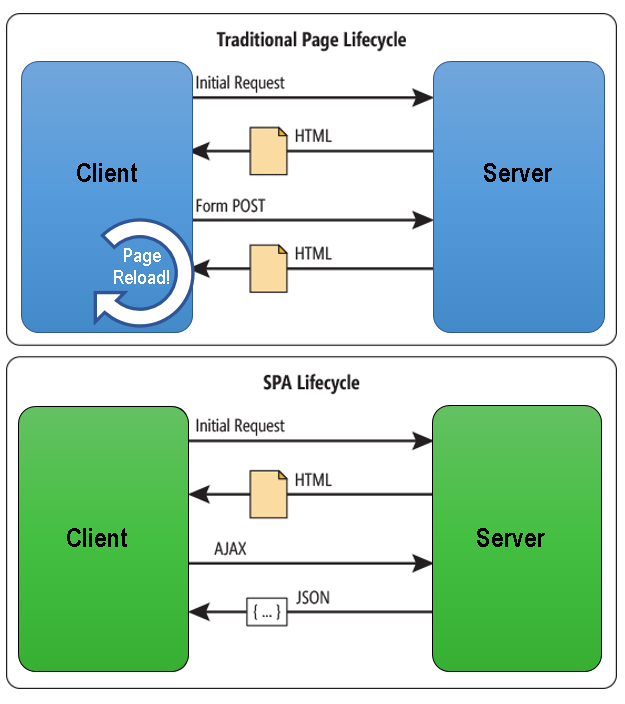Oracle JET provides a Single-Page Application (SPA) design for our application through the ojModule binding and oj.Router routing architecture. The way they work is through a content replacement technique by ojModule from Knockout.js with the content routing provided by oj.Router. The following diagram represents the difference between the traditional and Single-Page Application life cycle:

In a traditional page life cycle, each page gets loaded from the server to the client on request, and the page gets reloaded with the next page when the user tries to navigate through the application. In Single-Page Applications, the client loads the first page on initial request and when the user tries to navigate to the next page, an AJAX request is made to the Server to dynamically load the content and replace the view components with the desired elements, instead of a complete page reload.
The following is the basic routing example using the Oracle JET module and routing elements...



